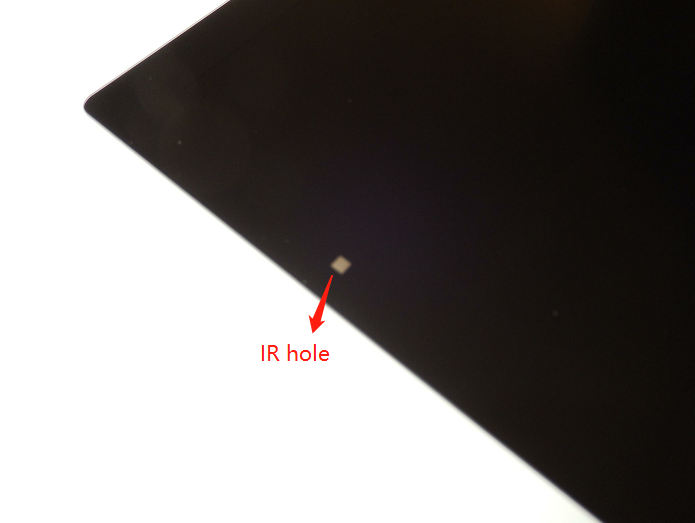The application of IR holes (infrared holes) in the touch screen is mainly reflected in the light sensing and distance sensing, and these functions are crucial for enhancing the interactive experience of the touch screen and the intelligence level of the device.
The application of IR holes in touch screen:
1. light sensing:
The infrared ink holes in the IR holes allow infrared light to penetrate while blocking visible light and ultraviolet light. This design allows the touch screen to automatically adjust the brightness of the screen according to the brightness of the external light, in order to achieve the effect of power saving and eye protection. For example, in darker environments, the screen will automatically dim to reduce energy consumption, while in brighter environments, the screen will brighten accordingly to improve visibility.
This automatic brightness adjustment not only enhances the user experience, but also helps extend the battery life of the device.
2. Distance Sensing:
The IR hole is also used for distance sensing. When the user's ear is close to the screen (e.g. when answering a call), the distance sensor detects the change and automatically closes the screen to prevent accidental touches. When the user moves his/her ear away, the screen comes back on.
This design not only improves the intelligence of the device, but also avoids operational interruptions caused by inadvertent touching of the screen during a call.

Due to its unique features and advantages, touch screens with IR holes are widely used in various devices that require high interactivity and intelligent control. The following are some typical application scenarios:
1. Smartphone:
Smartphones are one of the most common application scenarios for touchscreens with IR holes. Through the integration of IR holes, smartphones can achieve automatic brightness adjustment and distance sensing functions to enhance the user experience and the intelligent level of the device.
2. In-vehicle display:
In the automotive industry, in-vehicle displays have also begun to adopt touchscreen designs with IR holes. This design enables the car display to automatically adjust the brightness according to the changes in the light inside the car, and automatically closes to prevent accidental touch when the driver is close to the screen.
3. Smart home control panel:
Smart home control panels are another important application scenario. By integrating IR holes, these control panels can achieve more intelligent control functions, such as automatically adjusting the brightness according to the indoor light.
While touchscreens with IR holes provide convenient features such as light and distance sensing, they also have some potential drawbacks.
1. Higher cost: Compared with traditional touchscreens, touchscreens with IR holes require additional integration of infrared sensing elements and corresponding control circuits during the production process, which increases manufacturing costs. As a result, the price of such touchscreens may be relatively high in the market, which may be a consideration for cost-sensitive application scenarios.
2. Technical complexity: Touchscreens with IR holes involve infrared sensing technology, which requires manufacturers to have a higher level of technical skill and quality control during the design and production process. Technical complexity may lead to an increase in the defective rate during the production process, as well as higher requirements for subsequent maintenance and repair.
3. Susceptible to environmental interference: Infrared sensing technology may be subject to interference from external light sources, especially in bright light environments. If the external light source contains a large number of infrared components, it may interfere with the infrared sensing function of the touch screen, resulting in false touches or functional failure. In addition, dust, dirt, etc. may also block the IR holes, affecting the normal transmission and reception of infrared rays.
4. Functional limitations: Although the touch screen with IR holes provides functions such as light sensing and distance sensing, its main function is still limited to touch interaction. For application scenarios that require more complex interactions (e.g. gesture recognition, pressure sensing, etc.), additional sensors or technologies may be required.
5. Maintenance and Care Requirements: Due to the presence of IR holes, touchscreens with IR holes may require more attention in terms of maintenance and care. Users need to clean the IR holes regularly to ensure that they are unobstructed and to avoid the accumulation of dust and dirt. It is also necessary to avoid physically damaging or obscuring the IR holes during use.
While touchscreens with IR holes offer convenient functionality, they also face challenges in terms of cost, technical complexity, environmental interference, functional limitations and maintenance requirements. When choosing whether or not to use a touchscreen with IR holes, comprehensive consideration needs to be made based on specific application scenarios and needs.


